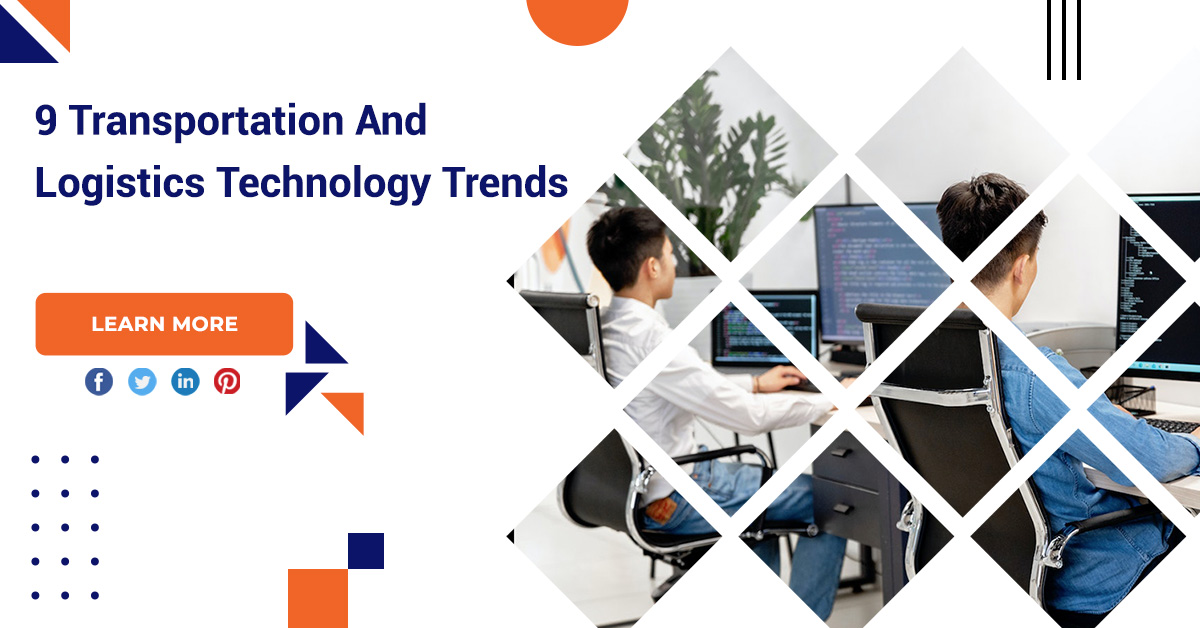9 Transportation And Logistics Technology Trends
Technology is driving change in all areas of life and logistics is no different. Connectivity and the increased use of social media are raising customer expectations and placing increasing emphasis on the power of a company’s logistics operations to meet, if not exceed, consumer demands.
Transportation and logistics technology
Cloud logistics
The cloud is used in virtually every aspect of modern life, including banking, email, streaming media and e-commerce. Cloud computing brings benefits to many logistics service providers. In the logistics industry, daily interaction between stakeholders is essential. Cloud computing enables the cost-effective connection of many partners throughout the supply chain.

Internet of things
The Internet of Things describes a network of physical objects that are embedded with sensors, software, and other technologies to connect and exchange data with other devices and systems over the Internet. Companies are using IoT to improve the logistics process. Improves security and theft detection by monitoring warehouse entries and alerting on missing products.

Big data & analytics
A good set of analyzed data is useful for increasing warehouse productivity, performance management and optimal utilization of logistics resources. Data collected from resource observations, weather and fleet plans improves routing and delivery planning.
Robotics
Robotic Process Automation has exploded in terms of development over the past few years. Robotic solutions based on advanced technologies and affordability are aggressively entering logistics. Robots are known in the logistics industry with functions such as pickup, distribution and delivery.

Autonomous vehicles
Newspapers are flooded daily with reports of traffic accidents. In this accident, the driver’s life is destroyed first, and expensive products second. This is why autonomous vehicles are booming in the logistics industry.
Elastic logistics
Elastic logistics refers to a business model that is flexible and agile enough to upscale or downscale according to market demands. Firms can handle the supply chain more efficiently with elastic logistics during periods of high fluctuating demand. It helps address issues such as underutilization of vessels, storage constraints, and overstocking.
Digital twins
Many logistics experts say that products and their computer models are never the same. Currently, modeling does not focus on how parts wear and replace, how fatigue builds up in structures, or how companies change and respond to dynamic customer needs. This innovative technology helps you engage with a digital model of a physical object much like you would when making physical parts.
Blockchain
Documentation is one of the most important functions in the logistics industry. This is why blockchain is a doom for the industry. Blockchain is a digital ledger of duplicate transactions and distributed across a network of computer systems on the blockchain.

3D printing
Local and regional supply chains could be redrawn and become more complex, or even eliminated, as 3D printing reduces the need to physically transport goods and parts over long distances. In the growing after-sales service sector, logistics operators will be key to meeting spare parts and warehousing requirements.

Conclusion
In this digital world, it is very impossible to stay competitive for any industry without leveraging technology. When we talk about the transport and logistics sector, technology has brought a spectacular change and has helped it with smooth workflow, increased efficiency, hassle-free tracking, cost minimization sustain you competitiveness in the market.








Leave A Comment
You must be logged in to post a comment.